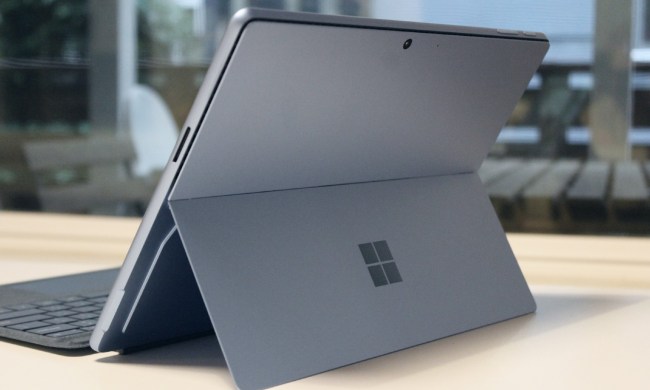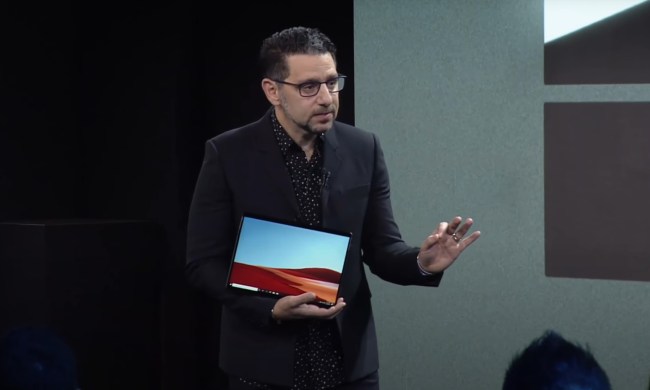The Surface Pro was once the star of Microsoft’s hardware lineup. It’s unique approach to the 2-in-1 form factor was risky at launch, but over the past seven years, it’s become a household name in consumer electronics.
But these PCs have hit an important inflection point. The launch of the Surface Pro X and the Surface Pro 7 — and even the forthcoming Surface Neo — all present different paths for how Microsoft can move forward.
The future of the Surface Pro feels wide open, but on the day of its seventh anniversary, the challenges it faces seem greater than ever.
The problem the Surface Pro never solved

Throughout all the iterations of the Surface and Surface Pro, one major problem has remained consistent.
Modern apps. Microsoft has always been planted firmly planted in its legacy desktop applications — whether that’s Office, Edge, or important professional apps from Adobe. It’s one of the main reasons people buy Windows PCs.
But the reliance on traditional x86 applications has always presented a roadblock for the transition to more mobile-friendly apps and devices. Microsoft has tried multiple times to transition entirely over to a universal app that would work across every platform (also known as Universal Windows Apps), but it’s just never caught on.
Despite the Surface Pro being a tablet, the device has always avoided this app problem by doubling a legitimately good laptop replacement. With a full version of Windows and an excellent keyboard experience, all you have to do is pretend it’s a highly portable laptop.
Not so with the Surface Pro X. The newest model in the lineup pushes that app problem back into the spotlight. The device shipped in late 2019, and its ambitions were sky-high. It was the sleekest Surface device we’d ever seen, sporting thin bezels, an innovative Type Cover keyboard, and redesigned stylus. It was the forward-looking Surface I’d always wanted, ready to take on the iPad Pros of the world.
The app problem holds back what would have been the best Surface Pro ever made.
But the early reviews for the Surface Pro X weren’t good, and the complaints weren’t about hardware or design. It was, again, a software and app problem. Because the device uses an ARM-based Qualcomm chip, like the ones you have in your phone, it’s not as open a system as a traditional Windows laptop. You can’t just go online, download an .exe file, and install it.
In order for an app to work on the Surface Pro X, it needs to be compiled in 64-bit for ARM — 64-bit x86 apps, which includes some important Adobe apps and pretty much every game, are a no-go completely. Not even everything in the Microsoft Store will work how it should. They can be emulated, but that’s where you hit some snags in performance battery life.
The app problem holds back what would have been the best Surface Pro ever made.
Playing it safe

The Surface Pro X, of course, has a more conventional sibling, the Surface Pro 7. It runs normal Windows apps and works perfectly fine as a laptop. While I’m happy to recommend that safer alternative to potential buyers, by not committing to one direction moving forward, Microsoft is forcing us all to bet on the future rather than Microsoft doing that for us.
Even worse, they’re making developers make that same bet.
Take, for example, the developer Finebits, which has been creating applications for the Microsoft Store since the Windows 8 era. With limited development dollars, the company’s outlook on universal apps sold through the Microsoft has soured recently.
“In my opinion, Microsoft’s attitude towards the developers of apps for Store deteriorated after the release of Windows 10,” Valery Polyachenko, CEO of Finebits, told Digital Trends. “The strategy of Microsoft is clear, they develop what brings income and close what does not bring. Probably, [Microsoft] Store is now out of focus and it’s sad.”
Finebits earned 29% of its 2019 app revenue on in-app advertising, a program Microsoft recently announced it was shutting down.
Microsoft is keeping all its doors open by supporting all kinds of new apps.
All the while, Microsoft won’t just straight up kill universal apps, either. They continue to be supported, and the company even recently announced that its new Edge browser has been compiled for 64-bit ARM for devices like the Surface Pro X — though it came late, and still isn’t available through the Microsoft Store.
Even on Microsoft’s new dual-screen PC, the Surface Neo, Microsoft is keeping its options open by supporting all kinds of new apps. That’s a safe way to go, but it won’t facilitate the rapid increase in universal apps it really needs to make these devices successful.
Until Microsoft signals definitively what the future of Surface and Windows will be, Surface products will remain aimless and limited in what they can be. Hopefully, by the time we arrive at the Surface Pro’s 10th anniversary, Microsoft will have made up its mind.

